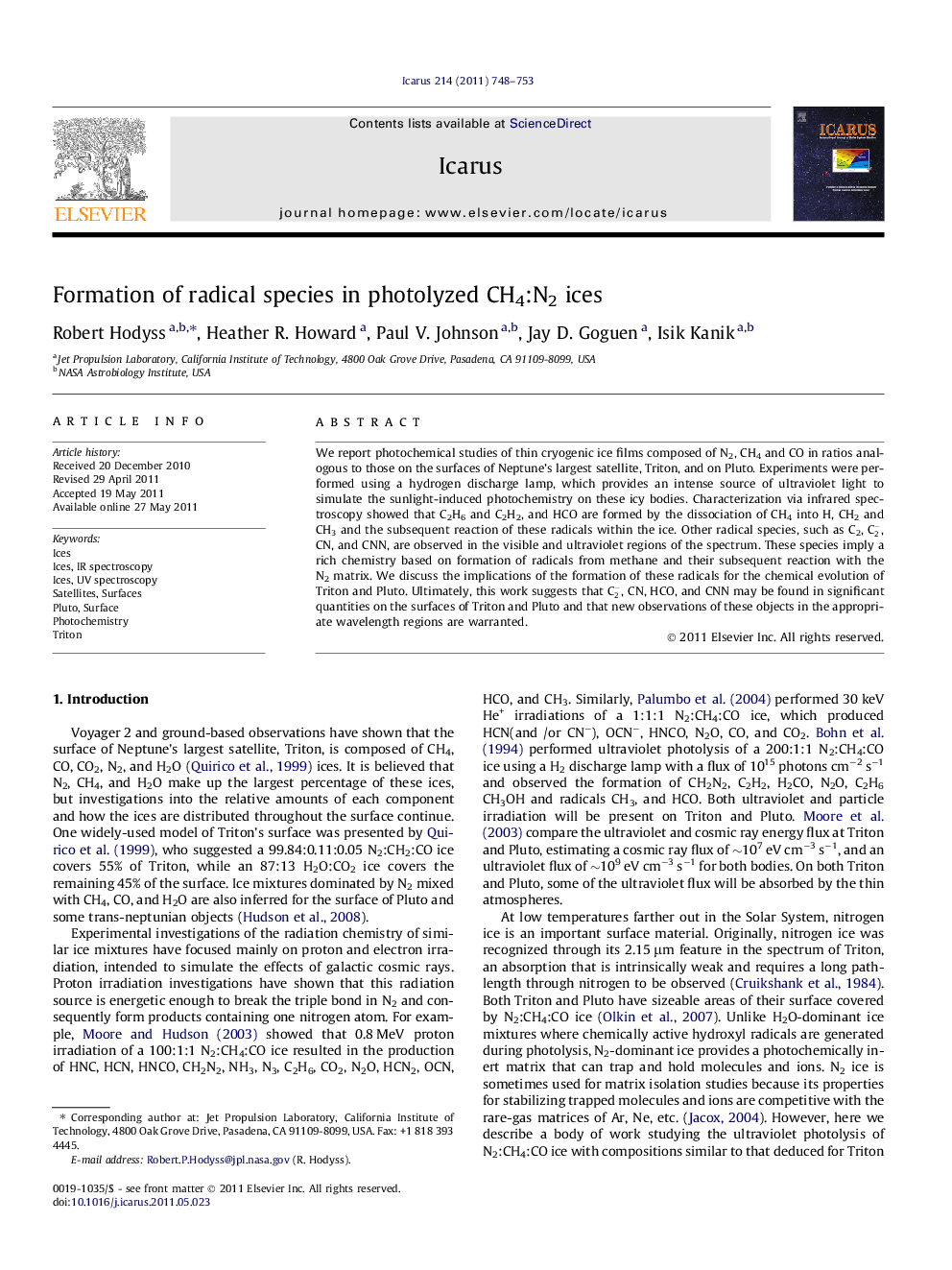| Article ID | Journal | Published Year | Pages | File Type |
|---|---|---|---|---|
| 1774211 | Icarus | 2011 | 6 Pages |
We report photochemical studies of thin cryogenic ice films composed of N2, CH4 and CO in ratios analogous to those on the surfaces of Neptune’s largest satellite, Triton, and on Pluto. Experiments were performed using a hydrogen discharge lamp, which provides an intense source of ultraviolet light to simulate the sunlight-induced photochemistry on these icy bodies. Characterization via infrared spectroscopy showed that C2H6 and C2H2, and HCO are formed by the dissociation of CH4 into H, CH2 and CH3 and the subsequent reaction of these radicals within the ice. Other radical species, such as C2, C2-, CN, and CNN, are observed in the visible and ultraviolet regions of the spectrum. These species imply a rich chemistry based on formation of radicals from methane and their subsequent reaction with the N2 matrix. We discuss the implications of the formation of these radicals for the chemical evolution of Triton and Pluto. Ultimately, this work suggests that C2-, CN, HCO, and CNN may be found in significant quantities on the surfaces of Triton and Pluto and that new observations of these objects in the appropriate wavelength regions are warranted.
► We report photochemical studies of thin cryogenic ice films composed of N2, CH4 and CO. ► Radical hydrocarbon species are produced and observed in the visible and ultraviolet regions of the spectrum. ► New observations of Triton and Pluto to search for these species are warranted.
